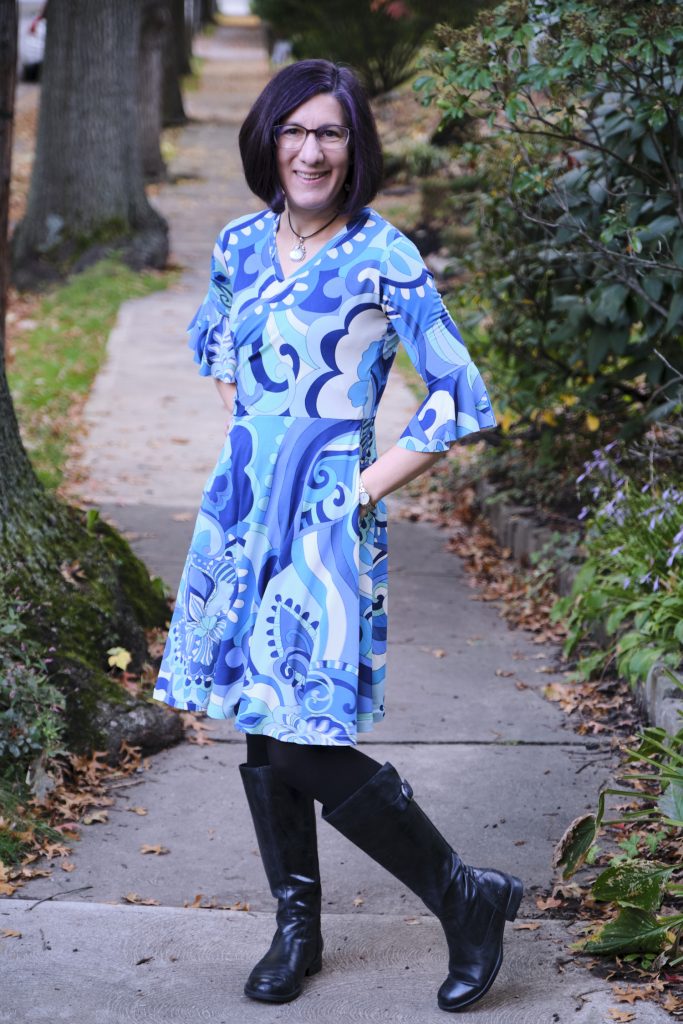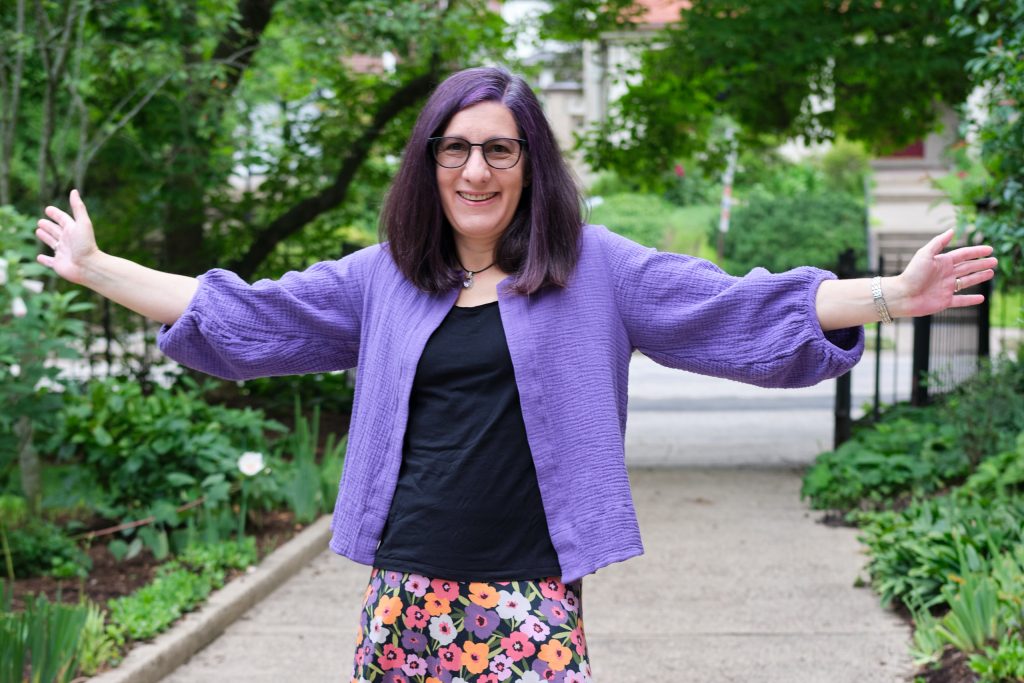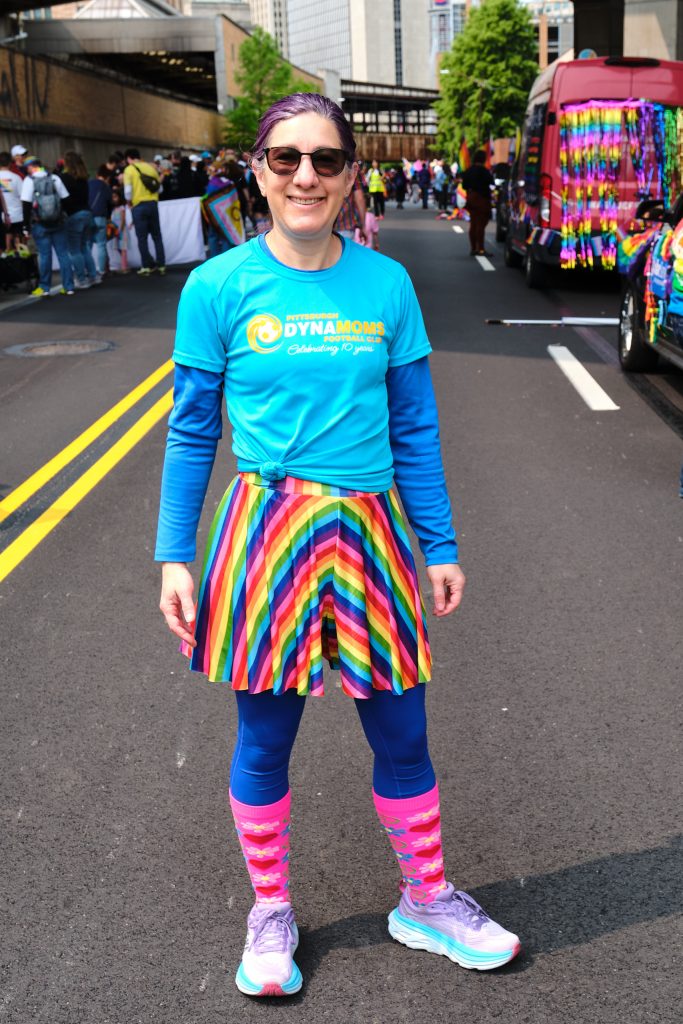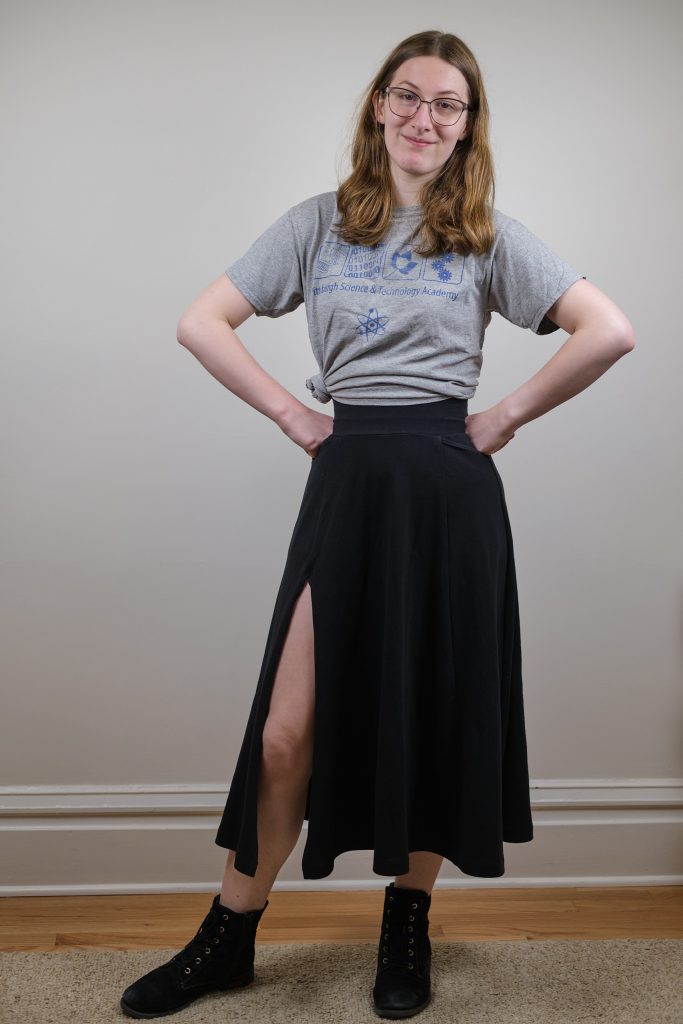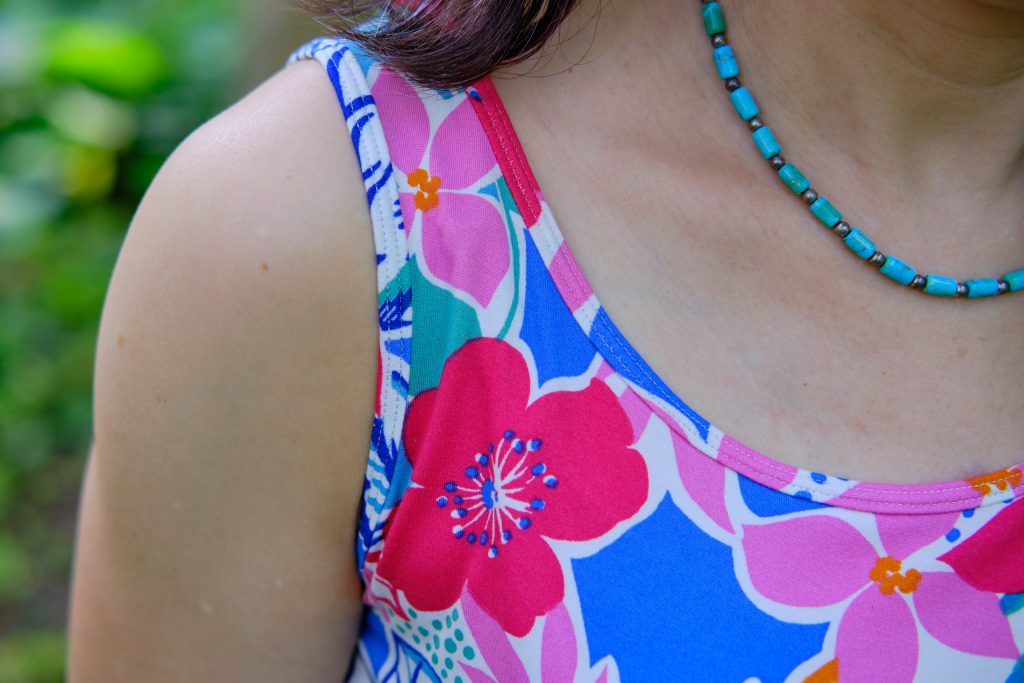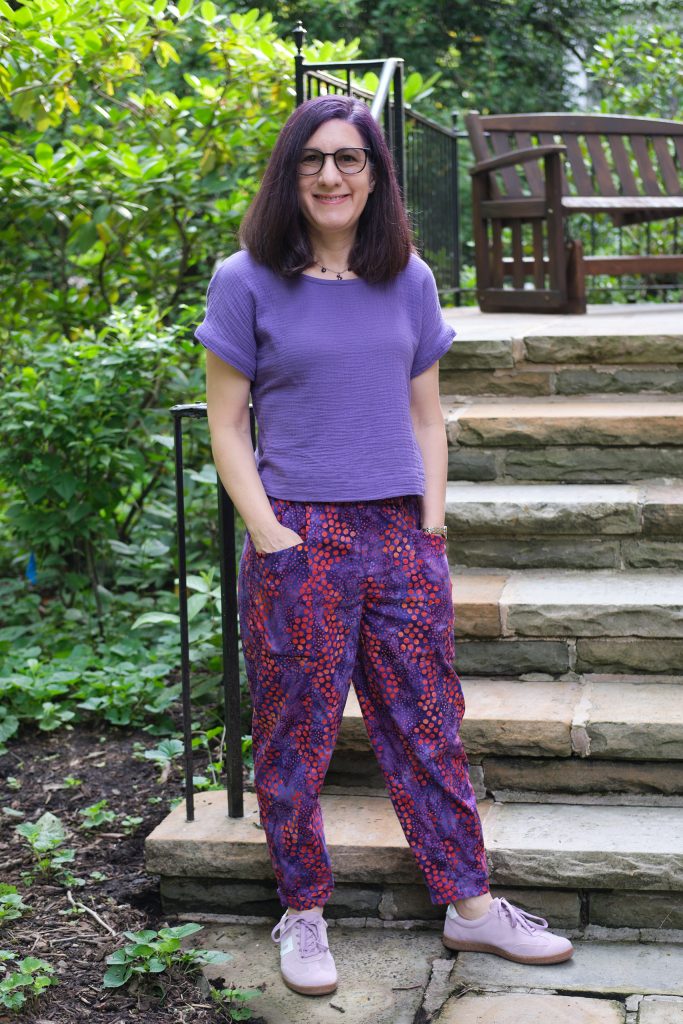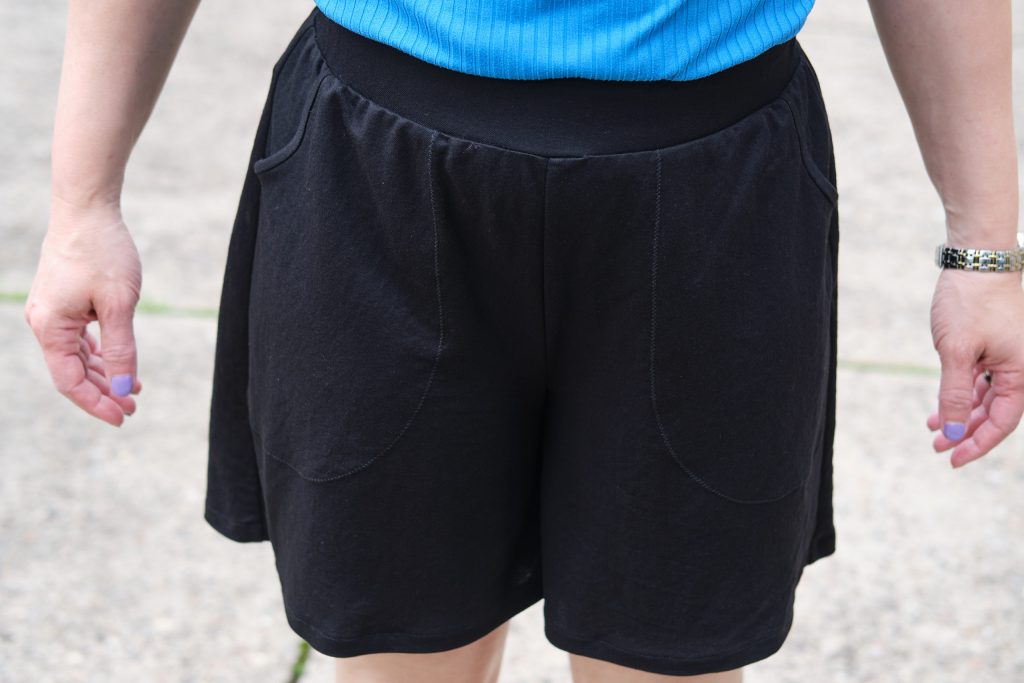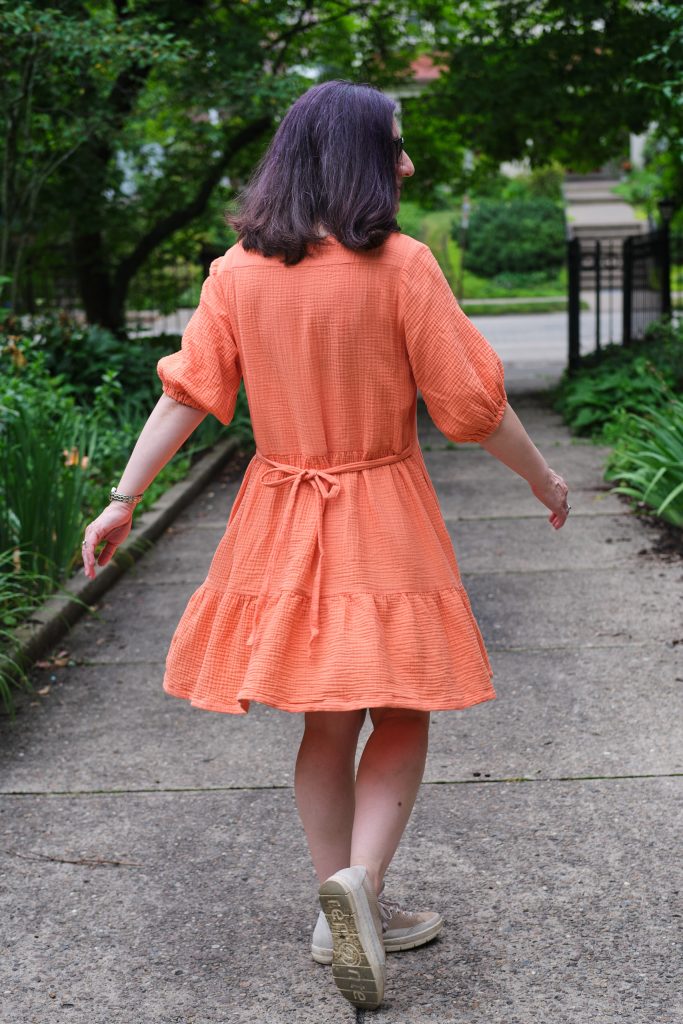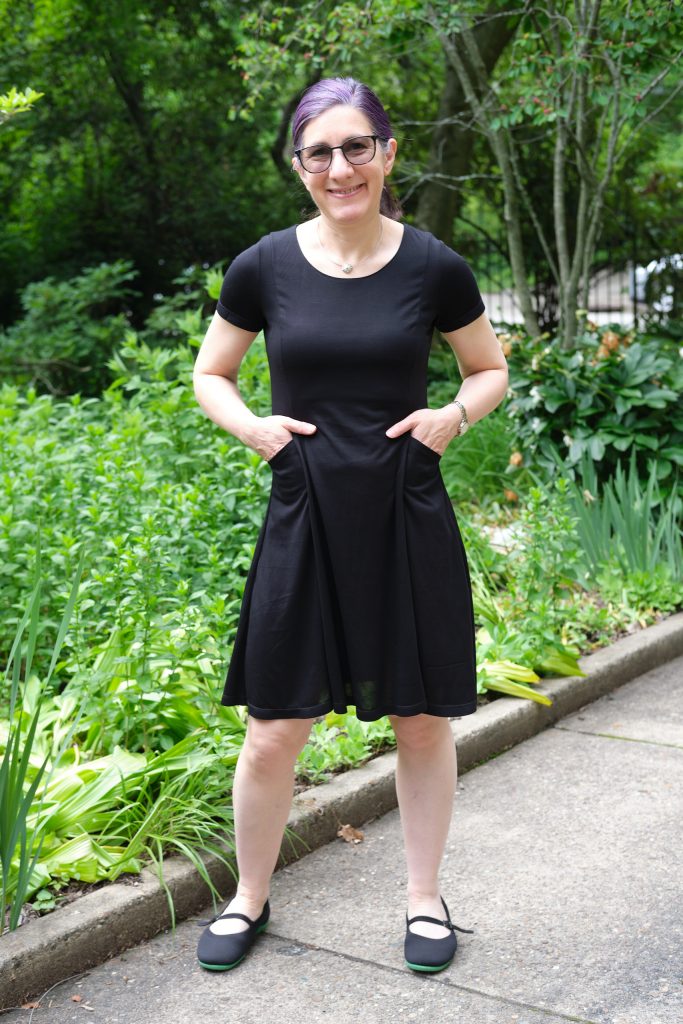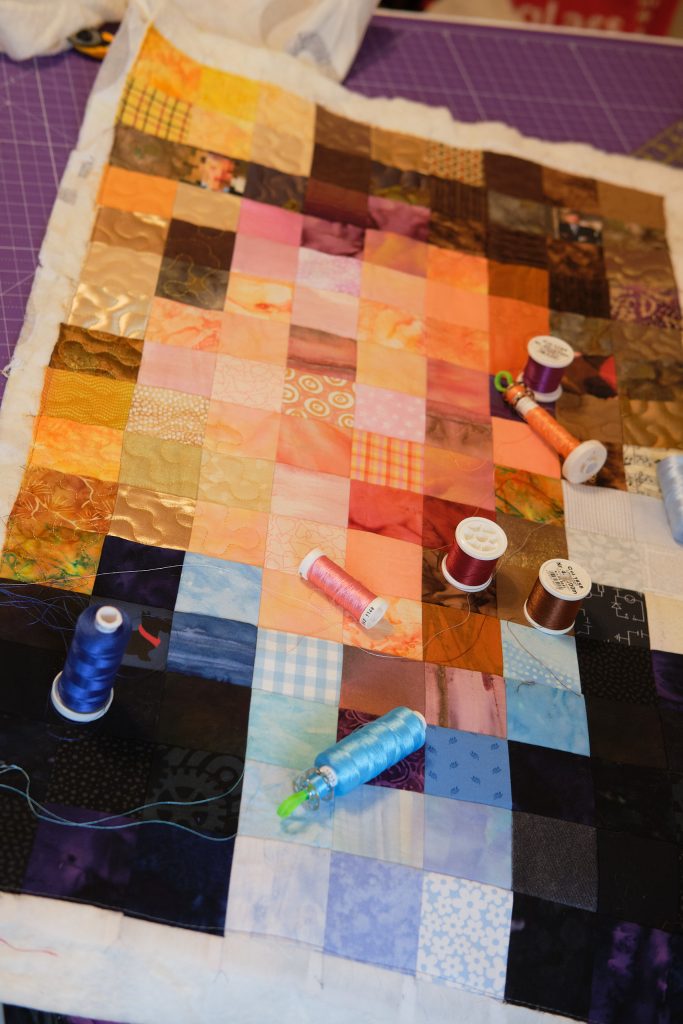Joanne faux wrap knit dress with flounce sleeves, faux wrap flounce skirt from Flared skirts ADD-ON, size P4, pockets modified so as not to attach to waist, made from 3 yards of 60-inch-wide ITY (2 yards black, 1 yard white).
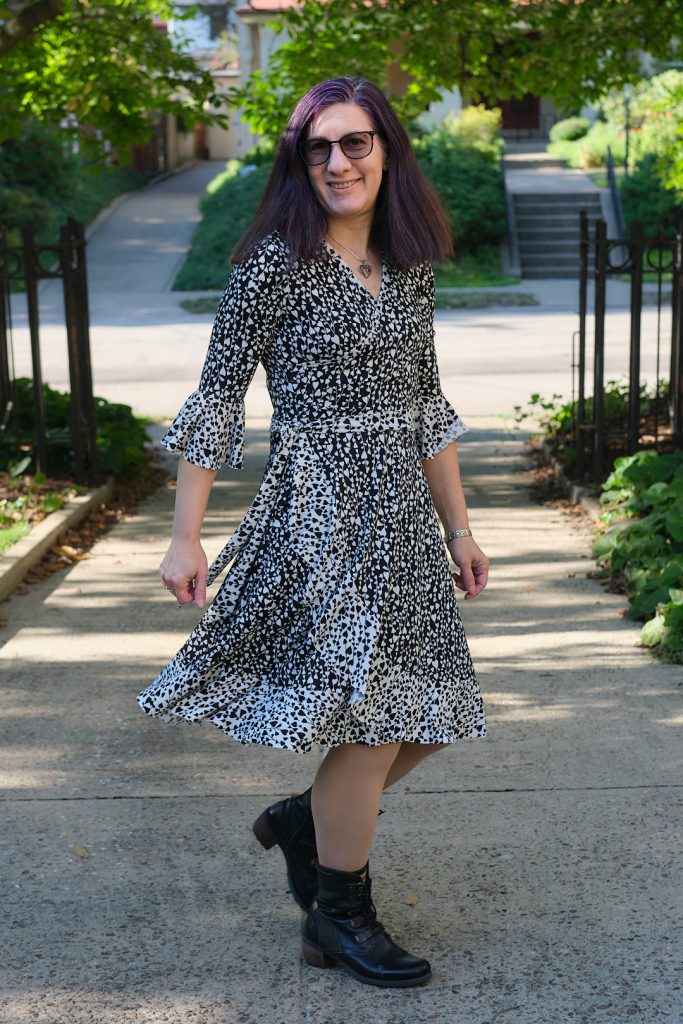
I recently made the Sinclair faux wrap flounce skirt for the Valley Skater dress and liked the results. I have long wondered about combining this skirt with the Sinclair Joanne dress, which has a faux wrap top. I figured if I had the the top and the skirt faux wrap meet at the waist it would look close to a real wrap dress.
I made my first Joanne dress over two years ago, before I had a serger or a projector. It is an old Sinclair PDF pattern but it doesn’t actually have projector files. Fortunately, the A0 copyshop files work just fine as projector files. I copied the pieces for the flounce-sleeve top and the pieces for the add-on faux wrap flounce skirt into an Affinity Designer File and was ready to project and cut.
I had a vision for using a pair of coordinating fabrics for this dress that would highlight all the flounces. I selected coordinating black-on-white and white-on-black “heartstrings” print ITY from Surge Fabrics, which seemed perfect for the project.
I accidentally copied the wrong size Joanne top and didn’t realize it until it was mostly sewn together and I wondered why it was so big. So I took it apart and cut the pieces down to the correct 4P size. Other than that little mistake, the dress came together pretty easily. I took the time, as usual to add pockets. I modified them so they attach only to the side seams and not the waist and made them a little deeper and sewed the openings up a bit so nothing falls out.

Since I used ITY fabric that doesn’t curl or fray I was able to leave all the flounces unhemmed.
These two patterns pair well. I decided to add a 2-inch wide belt to help “sell” the wrap idea and make it look less faux. The pattern includes a narrow belt, but I made a wider belt by cutting two 2.5-inch wide strips across the width of my fabric and serging them right sides together with a small gap, turning right side out, and hand sewing the gap closed.
Overall, I’m pleased with the results. However, I’m a little disappointed that my coordinating fabrics actually blend together and the flounces are much subtler than expected. I still like it, but I hope to find coordinating fabrics with higher contrast and make another dress like this some day. Another fabric shopping opportunity!



